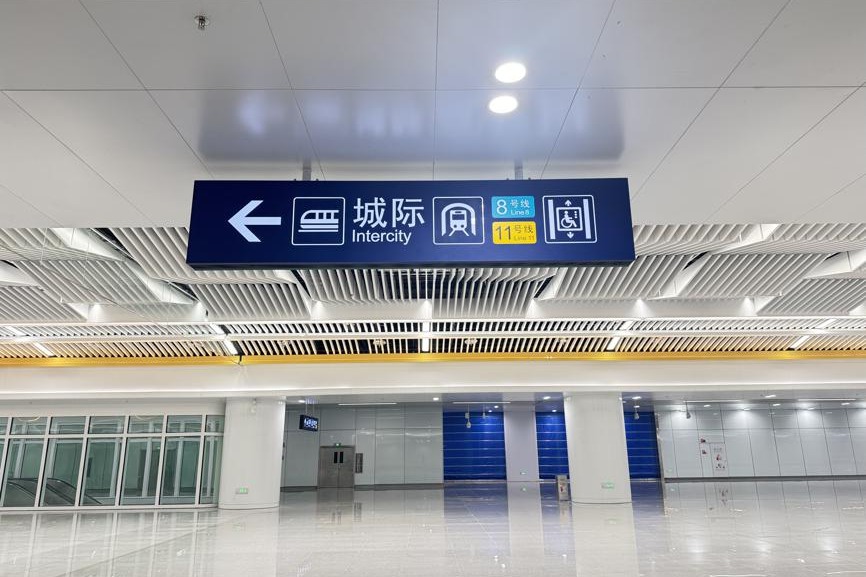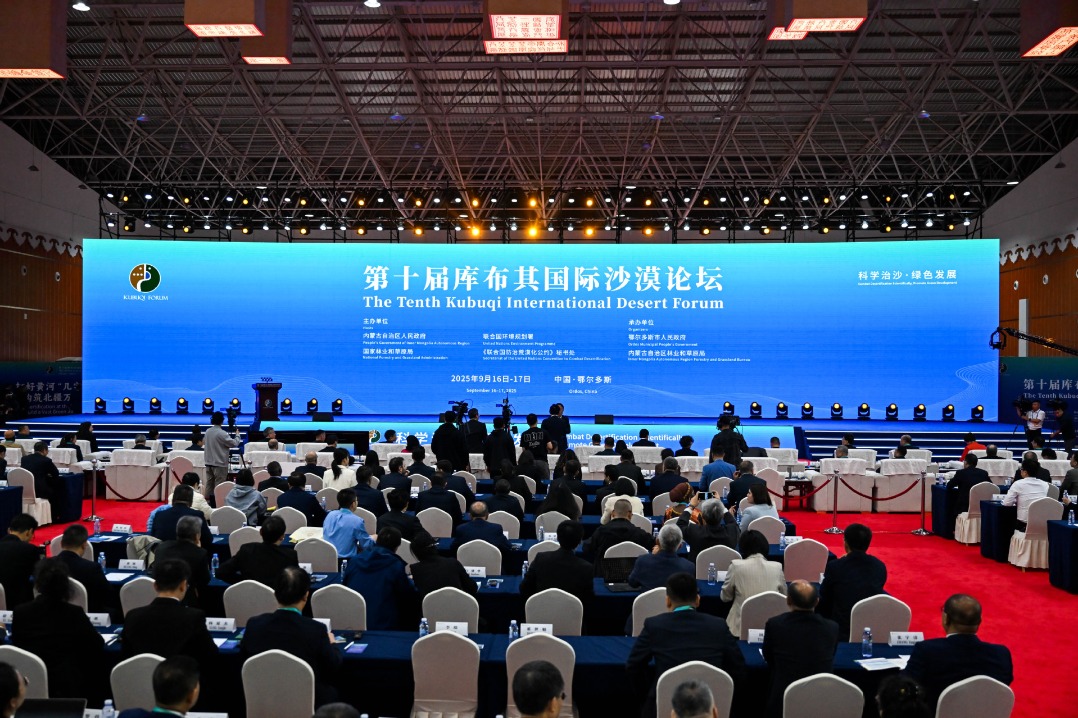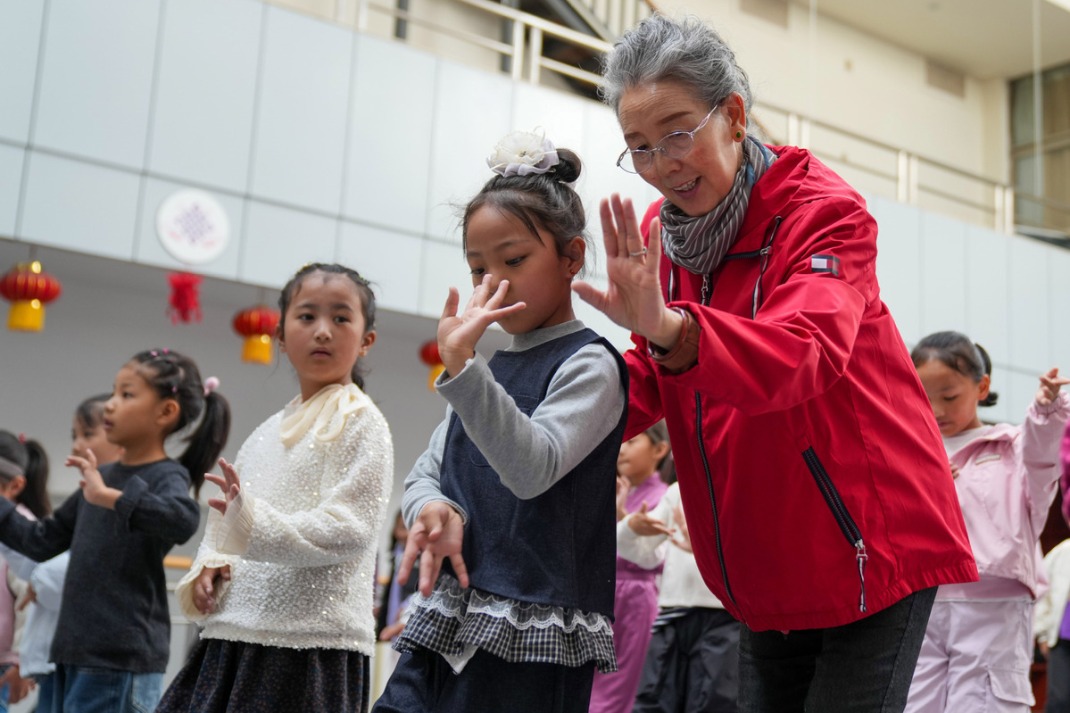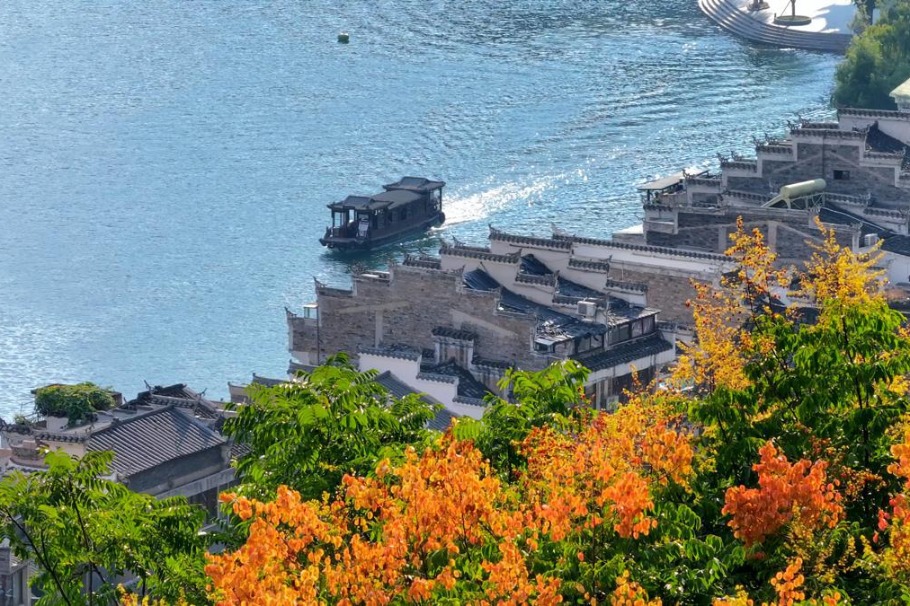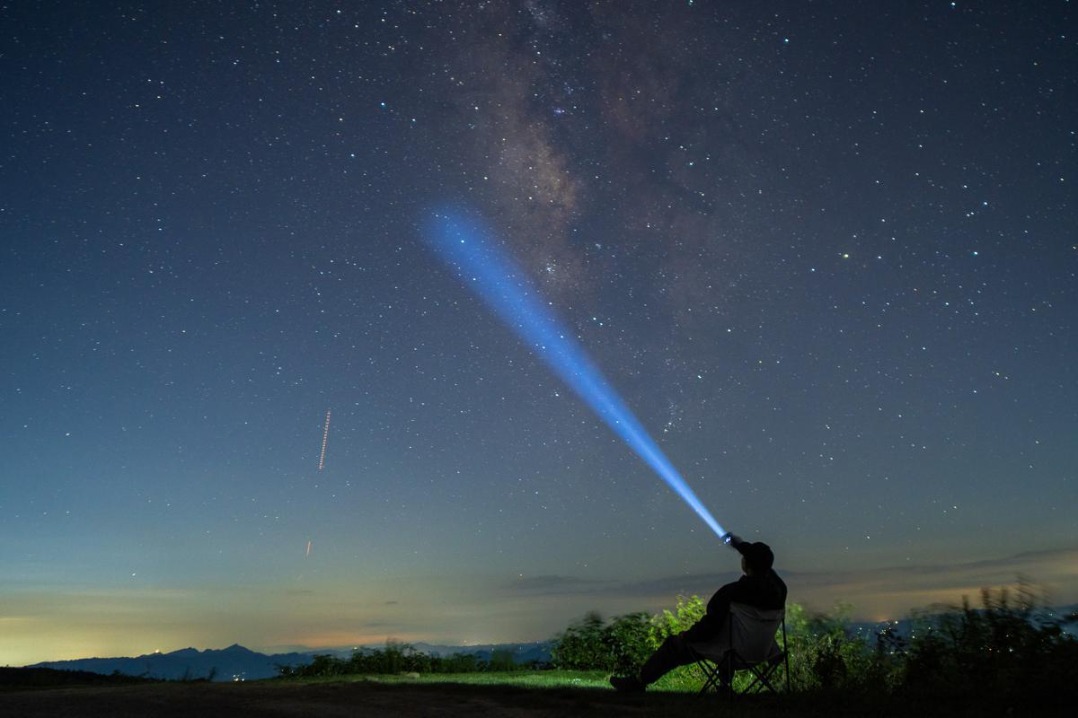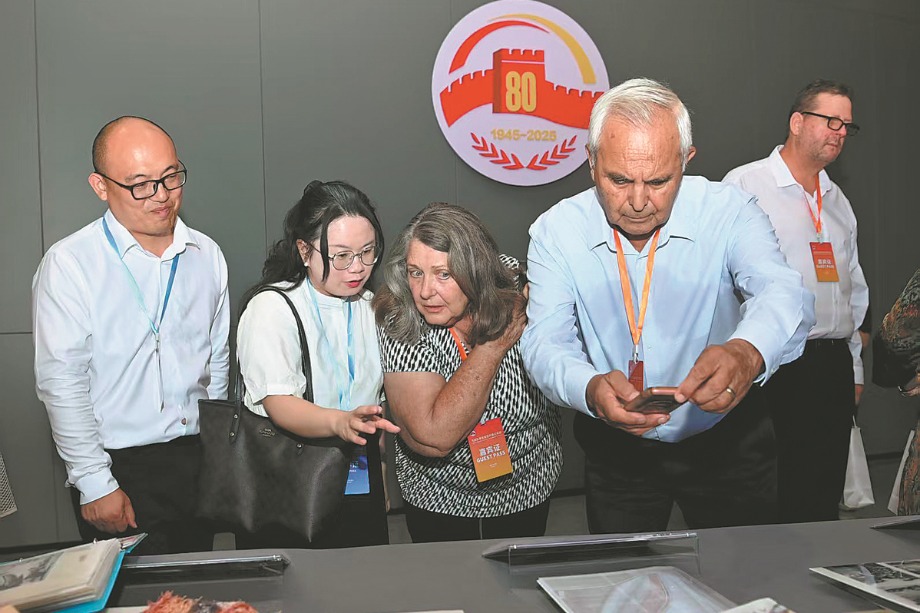Guerrillas, grains and growing strength





There is no doubt that the Jinggang Mountains are the leading geographical feature in the history of the Communist Party of China.
That's because no other range is so closely linked to the fate of a party, a country and its people.
Located in the west of Jiangxi province, Jinggang's forested ridges provided an ideal place for the CPC to settle, fight and grow during the late 1920s, when it was not even 10 years old.
In less than three years in the mountains, the Party achieved its early goals, including establishing the first revolutionary base in a rural area, which was of great importance for the growth of the Party and its army.
During the period, Mao Zedong combined the basic principles of Marxism with practical activity and put forward the idea of "taking rural areas as the center", a turning point in the revolution.
Local people describe the color of the mountains as the "purest red and green". The hillsides in April are aflame with azaleas, and the forestry rate is 93 percent.
Visitors walking in the hilltop town of Jinggangshan will come across many red-colored things, such as sculptures of flags, stars and torches as well as red rice.
Since the founding of New China in 1949, millions of people, including Party and State leaders, have set foot on the mountains to pay tribute to the struggle of the founding fathers.
Change of strategy
In 1927 and '28, the CPC began to lead armed uprisings in many cities after it learned the importance of military force when the Kuomintang broke an agreement between the two parties and began to crack down on the communists.
Most of the uprisings failed as a result of using the wrong strategy of targeting cities when the CPC was much weaker than the KMT, which had a professional army.
In the autumn of 1927, Mao abandoned an attack on Changsha, a city in Hunan province, after severe losses. Instead, he led the troops to the Jinggang Mountains and took the lead within the Party in implementing the move from cities to rural areas, both politically and physically.
"Mao conducted research in the countryside and made friends with the farmers. He realized it was impossible for the revolution to take place in big cities such as Beijing and Shanghai at that time, but he thought it could happen in the vast countryside," said Rao Dao-liang, a researcher at the Jinggangshan Revolution Museum.
The mountains on Jiangxi's border with Hunan province had several advantages. For example, they were beyond the reach of enemy troops, which was conducive to the CPC's development, and the dense forests and cliffs provided a natural environment for guerrilla warfare, Rao said.
A year after Mao founded a base in the mountains, Zhu De, another CPC leader, led his troops there.
Their combination formed the main force of the Red Army, which provided backing for developments at the rural base.
Relying on the people
The CPC led the Red Army in launching a land revolution. They took the land from landlords and gave it to farmers to break unfair distribution practices in which landlords owned 80 percent of the land, despite only accounting for 5 percent of the population.
"Mao knew that it was significant to win support from the farmers in the revolution," Rao said.
"It was a win-win. Many peasants later joined the army to protect their own land. When they put on the uniform, they were soldiers, but when they took it off it, they were farmers."
The earliest existing pledge of membership of the CPC is displayed in the museum in Jinggangshan. A close look reveals that there are six incorrectly written (Chinese) characters out of the total of 24.
The card belonged to He Yeduo, a local peasant who secretly collected information and transported food and the wounded for the Red Army.
"He put his name and address on it, which was very dangerous for him and his family during the war years. Despite the mistakes, it showed his loyalty and determination for the revolution," Rao said.
Mao often sat on a stone outside his living space in the mountains to read, think and discuss issues.
Because a maple grew from the bottom of the stone, he drew an analogy to stimulate the ambitions of the masses. He said: "First, this maple starts growing through a crack in the stone, but when it grows strong enough, it can break the stone apart. It's the same as our revolution: We are not strong enough at present, but if we keep going, we will surely break the stone of Chiang Kai-shek's government apart."
Struggles and surgery
As the Red Army grew stronger in the mountains, the KMT imposed a blockade, which resulted in a lack of necessities.
The Red Army soldiers ate local specialties, such as red rice, a coarse grain that is difficult to swallow, and pumpkins, which are tasty, but not filling.
Optimism during hardship was reflected in a merry revolutionary song: "Red rice, pumpkin soup, dig wild vegetables as our food. Soft and yellow dry straw, we sleep on a bed of golden silk. Wearing straw shoes and carrying our guns, we have one victory after another."
Rao said: "After battles, they performed surgery with kitchen knives and disinfected the wounds with saltwater. When the base ran out of salt, they scraped the earth off the walls, soaked it in water and boiled that to get salt."
In the counterattacks against the enemy's plans to encircle and suppress them, Mao and Zhu summed up the basic strategic and tactical principles of the Red Army's guerrilla war.
In the early 1930s, the main force left the Jinggang Mountains for southern Jiangxi and western Fujian province to establish more bases and carry out the land revolution.
More than 48,000 people died in the CPC's two years and four months in the mountains, an average of nearly 60 deaths each day.
Only 15,744 of them had their names engraved on a monument. The others remain anonymous.
- Shanghai leads airport economy rankings, Macao fastest growing
- Rail freight growth bolsters China's economic recovery
- Former CPC publicity official sentenced to 14 years and fined 4m yuan for bribery
- China expands space internet satellite network
- Global wisdom to aid conservation
- China activates emergency response for flood control in Shandong, Sichuan












